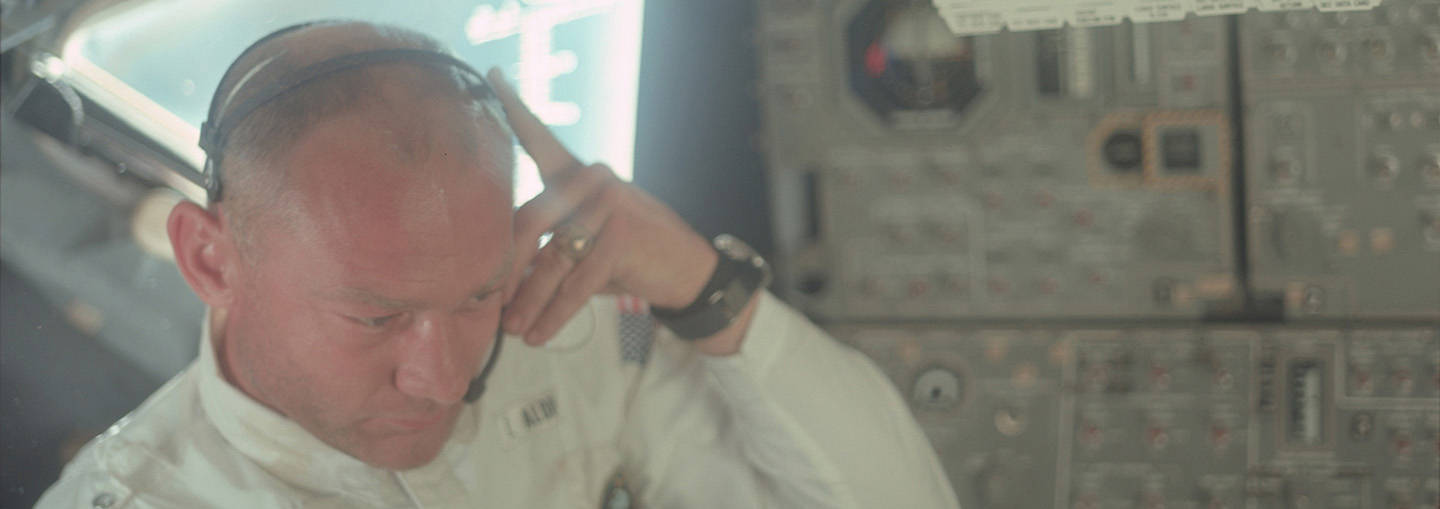Engineering The Communications System For Apollo 11

Transmitting Man's First Steps On The Moon To The World
When Neil Armstrong and Buzz Aldrin stepped onto the moon in 1969, a S-Band Transponder designed and built by General Dynamics was the only communications link the Apollo 11 Astronauts had to NASA's mission control and millions of people watching on Earth. Fifty years later, we are celebrating the historic engineering achievements of the Apollo missions as we develop new technology for man’s next giant leap from Moon to Mars and further into deep space.
“One small step for man. One giant leap for mankind.”
These iconic words from Neil Armstrong during his Moon landing were heard by more than 600 million people thanks in part to the engineering accomplishments of General Dynamics employees in Scottsdale, AZ. They built the communications transponder on board Apollo 11 which transmitted Armstrong's voice and video to Earth.
Today, our engineers are working to make history again. Join our team and develop new technology for the space missions of tomorrow.
Developing The S-Band Transponder For Apollo
The Apollo missions were incredibly complex with multiple space vehicles performing intricate maneuvers in deep space which required accurate tracking at extreme distances. The equipment had to be designed to withstand the extreme cold, heat and radiation they would experience and for Apollo 11, they also needed to transmit more data than previous NASA missions, including television and video.
Hundreds of employees in Scottsdale, AZ began developing the Unified S-Band Transponder in 1962, a new system that would accurately track the Apollo spacecraft, transmit and receive telemetry signals, communicate between ground stations and the spacecraft, and provide the link for the historic broadcast from the surface of the moon. The formal contract was awarded in 1963 to Motorola’s Government Electronics Division, a legacy company of General Dynamics.
The Journey to the Moon
The components produced by our Scottsdale employees, pictured left, equipped the Apollo spacecraft with the fundamental communications capabilities to remain in contact with mission control throughout the journey.
Once the spacecraft reached a distance 30,000 miles from Earth, the astronauts completely relied on the Unified S-Band Transponder to stay connected. The Transponder was their only link to mission control and transmitted all voice and video communications, spacecraft status, mission data, distance, the astronauts' biomedical data and emergency communications.
In total, our engineers in Scottsdale developed 12 major pieces of electronics equipment for the Apollo programs and Saturn V rockets.
Transmitting Neil Armstrong’s Iconic Words from the Moon
As Neil Armstrong stepped onto the surface of the moon, our S-Band Transponder successfully transmitted his voice and video over 200,000 miles to Earth as millions of people watched him take "one giant leap for mankind." In that moment, an engineering triumph years in the making was witnessed by the entire world.
The transponder worked in the harsh conditions of space and General Dynamics has been trusted to build communications equipment that astronauts and NASA have depended on ever since.

We’re not just celebrating history, we’re still making it.
General Dynamics communication links have been on every deep space probe and aboard every Mars rover and lander. We are proud to be a life-long partner to NASA, starting with the Explorer and Apollo missions, and will continue working closely with them, along with the Department of Defense, to shape the next 50 years of space exploration and national security.

Satellite Ground Systems
We are modernizing NASA’s Space Network ground segment, which is responsible for communications, command, control and navigation of the satellites that support NASA and commercial space missions.

Space Comms & Electronics
Modern versions of our transponders are in service on current NASA missions including the Juno Mission to Jupiter, the Curiosity Mars Rover, the Insight Mars Lander, and more.

Satellite Mission Payloads
Our satellite mission payloads provide weather information to meteorologists, send new data about our solar system to scientists, and enable actionable intelligence for warfighters.

Returning To the Moon & The Mission To Mars
Mars is the next step in human space exploration. While today it takes about 14 minutes to send data transmissions between Mars and Earth, our engineers are developing new ways of getting more information to and from deep space with greater clarity. Advancements in artificial intelligence, machine learning and quantum communications will forever change how we stay in touch with future communities on Mars.
General Dynamics is also building the transponder and emergency radios for Orion, the first human spacecraft built for deep-space missions. When Orion’s crew makes its first trip to space, General Dynamics transponders will keep the astronauts connected to mission command centers on Earth.
Interested In Working on Space Systems?
Apollo was just the beginning. Our world-class space and intelligence systems engineers and professionals are working to solve tomorrow's toughest challenges and we're looking for talented individuals to join our team. Are you ready?

The Apollo Unified S-Band Transponder was the only link the Apollo astronauts had with mission control after they reached a point approximately 30,000 miles from Earth. (Image Credit: General Dynamics/Motorola)

A 1960s era photo of Motorola's Facility in Scottsdale, AZ, now part of General Dynamics. (Image Credit: General Dynamics/Motorola)

This undated photograph shows Motorola's Apollo equipment built out of its Scottsdale, AZ facility. This facility was acquired by General Dynamics in 2001. (Image Credit: General Dynamics/Motorola)

General Dynamics engineers in Scottsdale developed a total of 12 pieces of electronics equipment on board the Saturn V. The major pieces of equipment are listed in this graphic. (Image Credit: General Dynamics)

Interior view of the Apollo 11 Lunar Module showing Astronaut Edwin E. Aldrin, Jr., lunar module pilot, during the lunar landing mission. (Image Credit: NASA)

Cartoon depicting Apollo Astronauts on the Moon using VHF radio to communicate with each other and S-band microwaves for Earth communications. (Image Credit: Electronics World Magazine)

A technical presentation that provides details on the Tracking, Telemetry & Control (TT&C) Systems on board NASA's Mercury, Gemini and Apollo missions.







